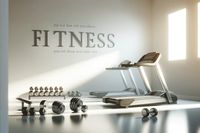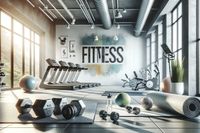How Hanging Heals the Body
Dead hang can be the missing component to a healthier body.

The Physical Benefits of Hanging
In recent years, there has been a growing body of evidence suggesting that hanging can have profound benefits for the human body. Dr. John M. Kirsch, a proponent of this practice, even reports prescribing hanging to patients recommended for shoulder surgery, with a remarkable 90% of them avoiding the need for surgery altogether. This article aims to delve into the science behind hanging, exploring its impact on posture, shoulder health, and even height gain.
The dead hang or hanging exercise is a straightforward yet highly effective strength training exercise that primarily focuses on the upper body muscles, particularly the back, shoulders, and grip. To perform this exercise, you simply hang from a stable bar or object with your arms fully extended and your feet lifted off the ground.
We at BOXROX have previously noted how incredible this exercise is. We featured in an article titled "the best exercise you’re not doing, but should," and also in the "10 exercises you probably overlooked for total performance." That is to show how we believe that hanging is a transformative exercise that people should do more often. And another figure who strongly believes this is Josh Hash. He is a movement coach who co-founded Strength Side alongside his brother Trevor Hash. They spent years in fitness from personal training to corrective exercise, to hand balancing. Strength Side’s YouTube Channel has over 1 million subscribers where videos are posted about different movement patterns and exercises to improve your athleticism and life-changing habits.
The information in this article was based on a video he shared on their YouTube channel exemplifying the benefits and healing abilities of hanging.
The Physical Benefits of Hanging
To comprehend why hanging is beneficial, we must first look at the evolutionary history of our shoulders. Our shoulder structure is reminiscent of brachiating apes, suggesting that our shoulders are naturally designed for hanging and climbing. As the only animals with shoulders capable of such movements, we may be unlocking hidden potential by incorporating hanging into our routines.
Decompression of the Spine: Hanging utilizes gravity to pull the hips away from the shoulders, creating space in areas commonly compressed due to modern-day lifestyles. This is particularly relevant for individuals engaged in weightlifting or physically demanding jobs.
Opening Up Muscles Around the Shoulder: Muscles like the lats and chest, often stiffened by prolonged sitting, can be stretched and opened up through hanging, promoting flexibility and range of motion.
Reshaping the Bone Structure: Hanging can contribute to the reshaping of the bone surrounding the shoulder, allowing for increased space in the ball-and-socket joint, leading to freer movement.
Increased Grip Strength: Beyond its impact on the shoulders, hanging has been linked to increased grip strength, a significant predictor of mortality. Strengthening your hands can potentially contribute to a longer and healthier life.
Developing Hanging Abilities: A Step-by-Step Guide
Basic Hang Technique:
- Keep shoulders relaxed and up towards the ears.
- Pull ribs down by maintaining slight tension in the core muscles.
- Ensure the head sits directly above the ribs.
- Place hands shoulder-width apart for optimal positioning.
- Practice steady breathing to expand the rib cage.
Progressive Hanging Method:
- Start with a 60-second hang, gradually building strength.
- If fatigued, use feet for assistance until reaching a full 60-second hang.
- Increase hanging duration gradually, aiming for 5 to 6 minutes every other day.
Differences Between Active and Passing Hanging:
Hanging, as a therapeutic and strength-building practice, comes in different forms, and understanding the nuances between passive and active hanging is crucial for maximizing its benefits. Both variations offer unique advantages, targeting specific aspects of the body, and play distinct roles in a comprehensive hanging routine.
Passive Hanging:
- Definition: Passive hanging involves suspending oneself from a bar or other hanging apparatus without engaging in active muscle contractions.
- Body Position: During passive hanging, the body remains relaxed, allowing gravity to naturally elongate and decompress the spine. The shoulders and arms are subjected to a gentle stretch without active muscle engagement.
- Benefits:
- Decompression of the spine: Passive hanging exploits gravity to create space between the shoulders and hips, relieving compression in the spine.
- Improved shoulder flexibility: The gentle stretch in the shoulder and upper back muscles helps alleviate stiffness, particularly beneficial for individuals with sedentary lifestyles.
Active Hanging:
- Definition: Active hanging involves intentional engagement of the muscles while suspended, requiring effort to maintain specific positions or perform controlled movements.
- Body Position: In active hanging, the shoulders are actively pulled down and away from the ears, engaging the muscles around the shoulder blades and the core. This dynamic engagement contrasts with the relaxed state in passive hanging.
- Benefits:
- Increased muscle strength: Active hanging targets the muscles of the shoulders, scapulae, and core, promoting strength and stability.
- Enhanced grip strength: Actively maintaining a hanging position challenges and strengthens the muscles responsible for gripping, contributing to improved overall grip strength.
Understanding the distinction between passive and active hanging allows individuals to tailor their hanging routines to specific goals and preferences. While passive hanging emphasizes relaxation and decompression, active hanging adds a strength-building component, making both variations valuable tools in promoting shoulder health, flexibility, and overall well-being.
Combining these approaches judiciously within a hanging routine can provide a comprehensive solution for individuals seeking a holistic approach to their physical fitness and health.



